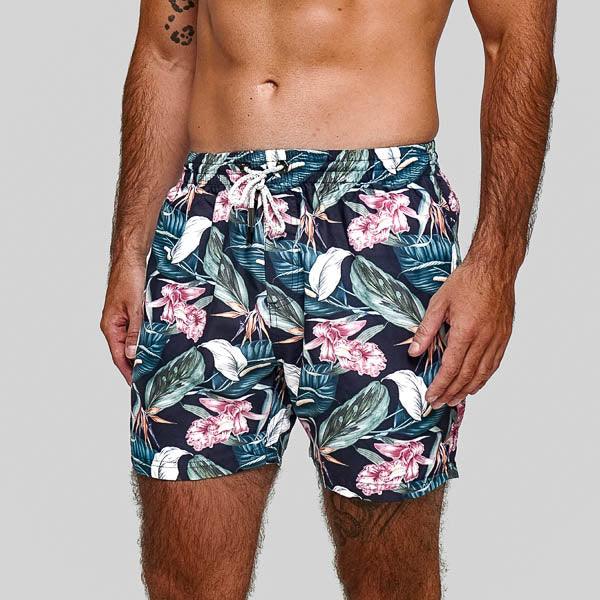Choosing the right fabric for men's swimwear is crucial for comfort, performance, and durability. Whether you're a professional swimmer or enjoy casual dips, the material of your swimwear can make a significant difference. In this comprehensive guide, we’ll explore the best fabrics for men’s swimwear, diving into their pros and cons. Understanding these fabrics will help you make an informed choice that suits your needs and style.
Understanding Men's Swimwear Fabrics
Importance of Fabric Choice
The fabric of your swimwear affects not only comfort but also performance and longevity. It's essential to know the different types of materials available and their unique characteristics.
Common Types of Fabrics Used in Men's Swimwear
Men's swimwear is crafted from various fabrics, each offering distinct benefits. The most common fabrics include nylon, polyester, spandex, and blends of these materials.
Nylon: The Classic Choice
Benefits of Nylon
Nylon is a popular choice due to its lightweight and quick-drying properties. It's also known for its excellent durability and elasticity.
Drawbacks of Nylon
However, nylon can degrade over time when exposed to chlorine and sunlight. It's also less resistant to saltwater compared to other fabrics.
Ideal Uses for Nylon Swimwear
Nylon is perfect for casual swimmers and those who swim in freshwater pools. Its comfort and flexibility make it a favorite for many.
Polyester: The Durable Option
Advantages of Polyester
Polyester is renowned for its chlorine resistance and durability. It retains color well and is less likely to pill or fray.
Disadvantages of Polyester
Despite its durability, polyester can feel less comfortable and less stretchy compared to nylon. It might also take longer to dry.
Best Applications for Polyester Swimwear
Polyester swimwear is ideal for frequent swimmers and those who swim in chlorinated pools. It's also great for competitive swimming due to its longevity. Bondi Joe's range of mens swim trunks are made from 100% recycled polyester fabrics.
Spandex (Lycra/Elastane): The Flexible Fabric
Pros of Spandex
Spandex is celebrated for its exceptional stretch and shape retention. It provides a snug fit, enhancing mobility and comfort.
Cons of Spandex
However, spandex is not very durable when exposed to chlorine and saltwater. It can degrade faster than other materials.
Suitable Scenarios for Spandex Swimwear
Spandex is best suited for swimwear that requires a close fit and high flexibility, such as racing suits and athletic swimwear.
Blended Fabrics: The Best of Both Worlds
Benefits of Blended Fabrics
Blended fabrics, such as nylon-spandex or polyester-spandex blends, combine the strengths of both materials. They offer a balance of durability, stretch, and comfort.
Challenges with Blended Fabrics
The main challenge is finding the right balance of materials to suit your needs. Some blends may still degrade quickly with chlorine exposure.
Ideal Uses for Blended Fabrics
Blended fabrics are excellent for those seeking versatile swimwear for various conditions. They provide comfort and performance suitable for both casual and competitive swimming.
Innovative Swimwear Fabrics
Eco-Friendly Options
With growing environmental concerns, eco-friendly swimwear fabrics such as recycled polyester and organic cotton blends are gaining popularity. These materials offer sustainability without compromising performance.
Technologically Enhanced Fabrics
Advanced swimwear fabrics infused with UV protection, water-repellant coatings, and anti-microbial properties are becoming increasingly common. These enhancements add significant value, especially for serious swimmers. We have lots of guides to mens swimwear fabric and technology available for you to check out.
Choosing the Right Fabric for Your Needs
Factors to Consider
When choosing swimwear fabric, consider factors such as frequency of use, type of water (chlorinated, saltwater, freshwater), and personal comfort preferences.
Practical Tips for Selection
Look for swimwear with a good balance of durability and comfort. Ensure the fabric suits the specific activities you'll engage in, whether it's competitive swimming, casual beachwear, or fitness swimming.
Maintenance and Care for Swimwear Fabrics
General Care Tips
Proper care can extend the life of your swimwear. Rinse your swimwear with fresh water after each use, avoid wringing it out, and let it air dry away from direct sunlight.
Specific Care for Different Fabrics
Nylon and polyester require slightly different care routines. Nylon should be kept away from high heat, while polyester swimwear can tolerate more rigorous washing.
Conclusion
Selecting the right fabric for men's swimwear is essential for comfort, performance, and durability. By understanding the pros and cons of each material, you can make an informed decision that meets your needs and enhances your swimming experience. Whether you opt for the classic nylon, the durable polyester, the flexible spandex, or an innovative blend, the right choice will ensure you swim in style and comfort.
FAQs
What is the most durable fabric for men's swimwear?
Polyester is the most durable fabric, known for its chlorine resistance and longevity.
Which fabric is best for competitive swimming?
Nylon-spandex blends are ideal for competitive swimming due to their flexibility and snug fit.
How do I care for my nylon swimwear?
Rinse it with fresh water after use, avoid high heat, and air dry it away from direct sunlight.
Is spandex swimwear good for saltwater?
Spandex can degrade in saltwater, so it's best for freshwater pools or when combined with more durable fabrics.
What are eco-friendly swimwear options?
Recycled polyester and organic cotton blends are excellent eco-friendly choices.
Can I use polyester swimwear in chlorinated pools?
Yes, polyester is highly resistant to chlorine and is perfect for frequent use in chlorinated pools.



















